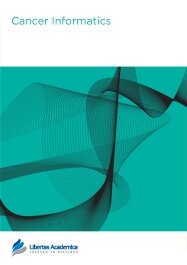


Lymphomas are the fifth most common cancer in United States with numerous histological subtypes. Integrating existing clinical information on lymphoma patients provides a platform for understanding biological variability in presentation and treatment response and aids development of novel therapies. We developed a cancer Biomedical Informatics Grid™ (caBIG™) Silver level compliant lymphoma database, called the Lymphoma Enterprise Architecture Data-system™ (LEAD™), which integrates the pathology, pharmacy, laboratory, cancer registry, clinical trials, and clinical data from institutional databases. We utilized the Cancer Common Ontological Representation Environment Software Development Kit (caCORE SDK) provided by National Cancer Institute’s Center for Bioinformatics to establish the LEAD™ platform for data management. The caCORE SDK generated system utilizes an n-tier architecture with open Application Programming Interfaces, controlled vocabularies, and registered metadata to achieve semantic integration across multiple cancer databases. We demonstrated that the data elements and structures within LEAD™ could be used to manage clinical research data from phase 1 clinical trials, cohort studies, and registry data from the Surveillance Epidemiology and End Results database. This work provides a clear example of how semantic technologies from caBIG™ can be applied to support a wide range of clinical and research tasks, and integrate data from disparate systems into a single architecture. This illustrates the central importance of caBIG™ to the management of clinical and biological data.
PDF (2.78 MB PDF FORMAT)
RIS citation (ENDNOTE, REFERENCE MANAGER, PROCITE, REFWORKS)
BibTex citation (BIBDESK, LATEX)
XML
PMC HTML

Publishing in Cancer Informatics was the fastest publication I have ever experienced and has received the highest viewing rate. So it is a great place to publish your very latest research.

All authors are surveyed after their articles are published. Authors are asked to rate their experience in a variety of areas, and their responses help us to monitor our performance. Presented here are their responses in some key areas. No 'poor' or 'very poor' responses were received; these are represented in the 'other' category.See Our Results
Copyright © 2013 Libertas Academica Ltd (except open access articles and accompanying metadata and supplementary files.)
Facebook Google+ Twitter
Pinterest Tumblr YouTube